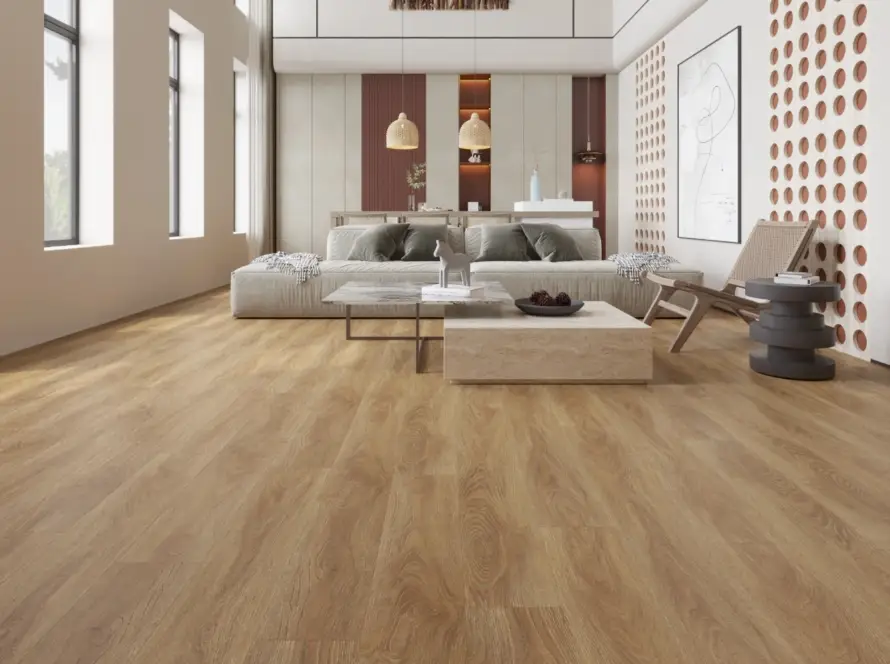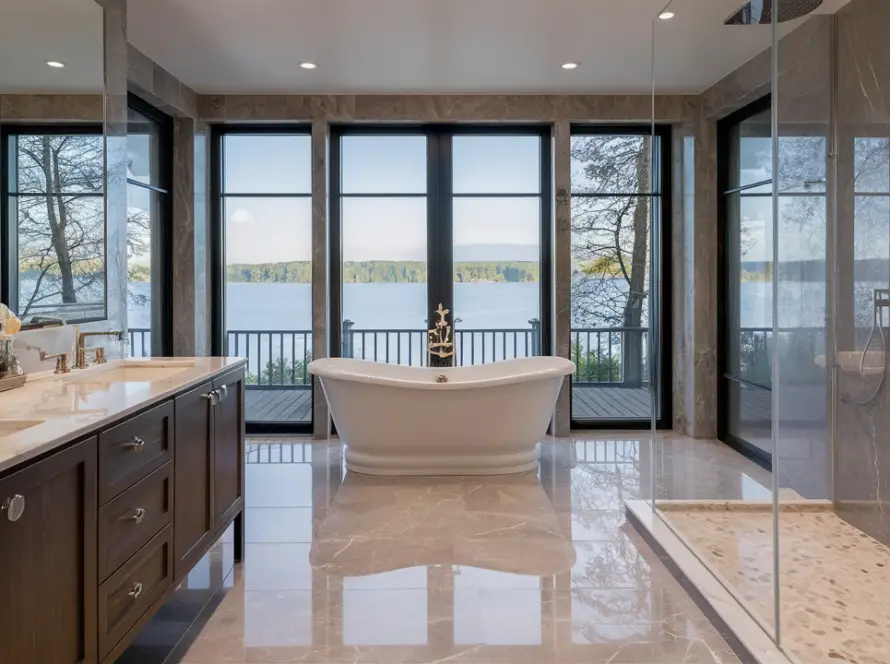Выбор правильного напольного покрытия для вашего дома может оказаться непростой задачей, особенно при наличии множества вариантов. Два популярных варианта: SPC (каменно-пластиковый композит) и ламинат. Хотя на первый взгляд они могут показаться похожими, у них есть существенные различия, которые могут существенно повлиять на их эксплуатационные характеристики и пригодность для различных сред.
В этой статье мы рассмотрим основные различия и преимущества SPC и ламинированных напольных покрытий, чтобы помочь вам принять обоснованное решение.
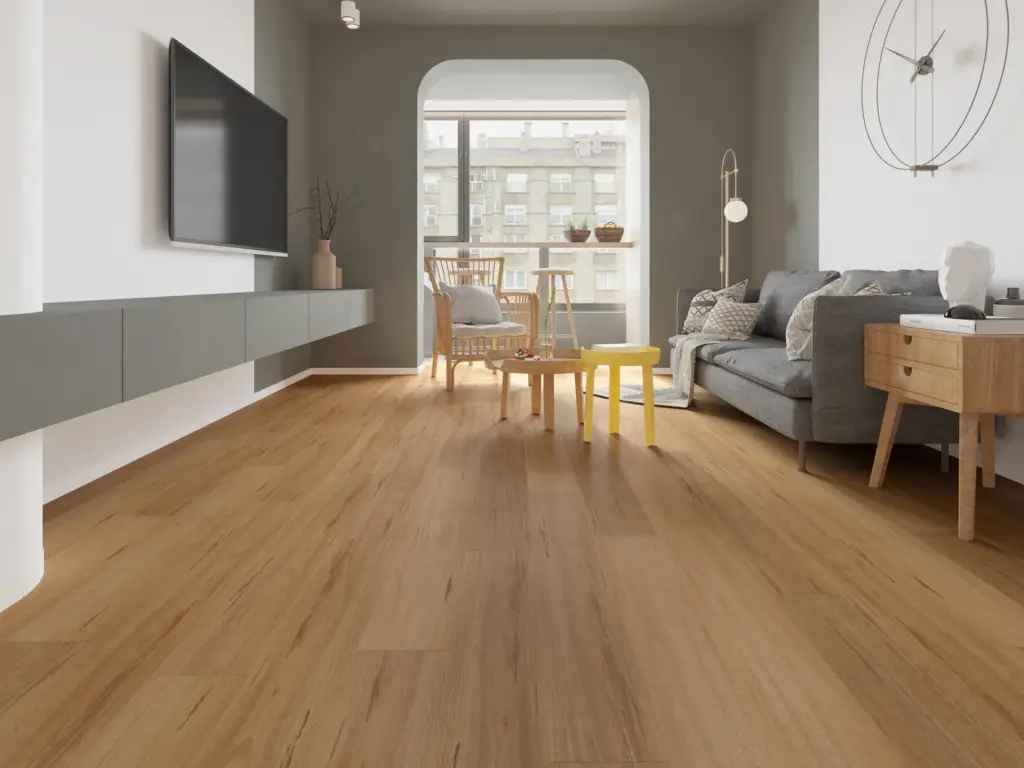
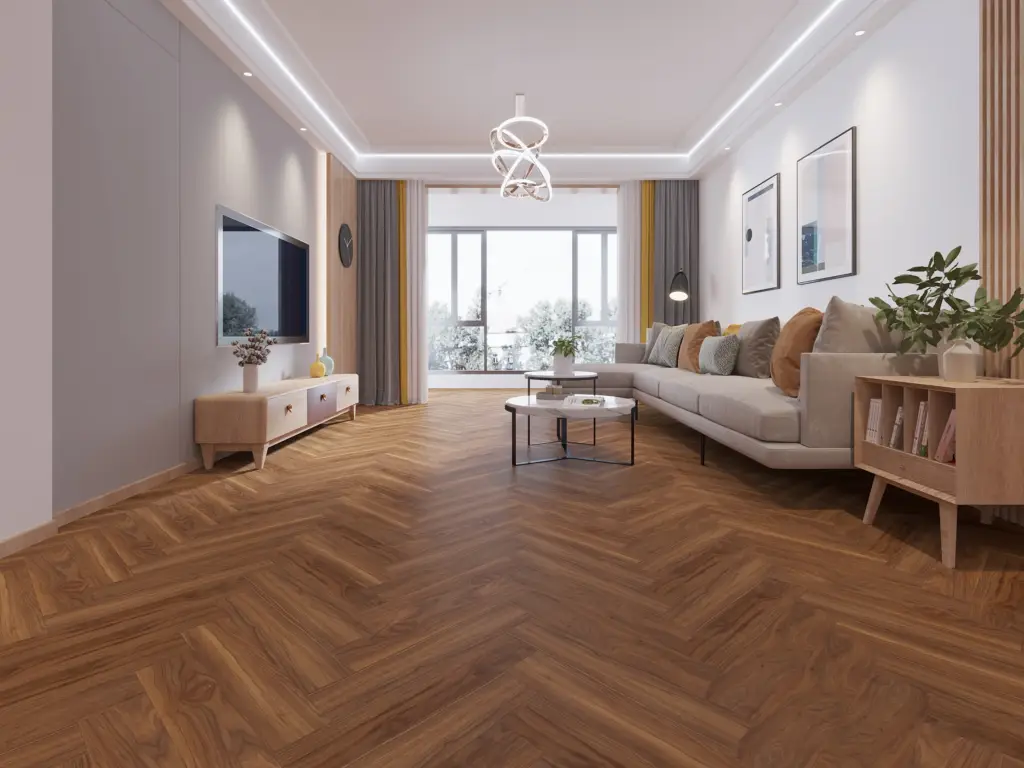

Ключевое отличие SPC и ламината
Ключевое различие между SPC и ламинированным полом заключается в материалах основы. SPC-пол имеет основу, изготовленную из смеси известняка и смолы на основе ПВХ, известной как Stone Plastic Composite.
С другой стороны, ламинат имеет основу из древесноволокнистой плиты высокой плотности (HDF), которая состоит из спрессованных древесных волокон.
Что такое SPC ламинат?
SPC flooring означает Stone Plastic Composite flooring. Он изготавливается из смеси известнякового порошка, поливинилхлорида (ПВХ) и стабилизаторов, что приводит к образованию высокопрочной и водостойкой сердцевины.
Этот тип напольного покрытия известен своей прочностью, что делает его идеальным для помещений с высокой проходимостью и помещений, подверженных воздействию влаги, таких как кухни и ванные комнаты.
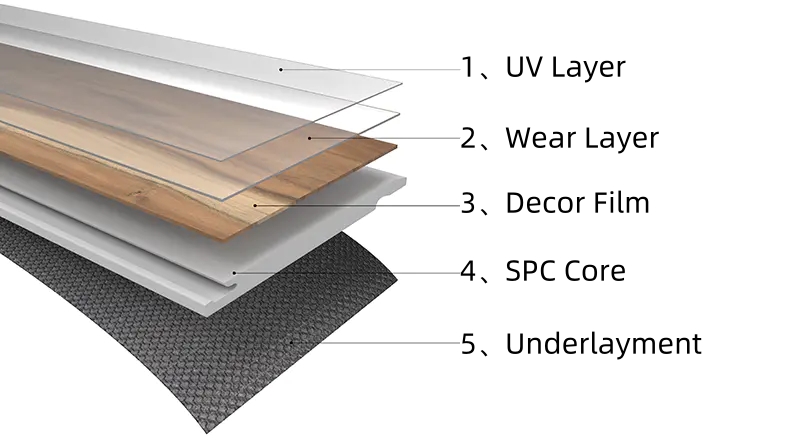
Преимущества SPC ламината
- Прочность: напольное покрытие SPC обладает высокой устойчивостью к царапинам, вмятинам и общему износу, а его потенциальный срок службы составляет 20–30 лет и более..
- Водонепроницаемый: напольное покрытие SPC имеет водостойкость 100%, что делает его пригодным для помещений, подверженных воздействию влаги, таких как ванные комнаты, кухни и подвалы.
- Низкие эксплуатационные расходы: Легко очищается регулярным подметанием и периодической влажной уборкой. Плотная, непористая поверхность не позволяет большинству пролитых жидкостей въедаться.
- Стабильность: напольное покрытие SPC не расширяется и не сжимается при изменении температуры или влажности, обеспечивая единообразные ощущения под ногами.
- Подходит для самостоятельного изготовления: Большинство напольных покрытий SPC оснащены системой замков-кликов, что упрощает монтаж без помощи специалистов..
- Универсальность дизайна: Технология печати высокого разрешения позволяет напольным покрытиям SPC имитировать внешний вид дерева, камня и других материалов, предлагая широкий спектр эстетических возможностей..
Что такое ламинат?
Ламинированный пол состоит из сердцевины из древесноволокнистой плиты высокой плотности (HDF), изготовленной из спрессованных древесных волокон. Он покрыт фотографическим слоем, который имитирует внешний вид дерева, камня или других материалов, и защитным износостойким слоем. Ламинированный пол популярен благодаря своей доступности и простоте установки, что делает его распространенным выбором для гостиных и спален.
Преимущества ламината
- Доступность: Ламинированные полы, как правило, более доступны по цене, чем полы SPC, что делает их бюджетным вариантом для многих домовладельцев..
- Простота установки: В ламинированном напольном покрытии также используется система замков «клик-замок», что упрощает его установку даже для любителей делать все своими руками..
- Эстетическое разнообразие: Ламинированные напольные покрытия выпускаются в широком ассортименте дизайнов и стилей, что позволяет домовладельцам добиться внешнего вида дерева, камня или других материалов по более низкой цене..
- Прочность: Хотя ламинат не такой прочный, как SPC, он обеспечивает хорошую устойчивость к царапинам и износу, особенно в помещениях с умеренной проходимостью..
- Комфорт: Основа из HDF обеспечивает комфортные ощущения при ходьбе, что делает ее пригодной для жилых помещений и спален..
Краткое содержание
SPC и ламинат предлагают уникальные преимущества, которые отвечают различным потребностям и предпочтениям. SPC-пол отличается долговечностью, водостойкостью и низкими эксплуатационными расходами, что делает его идеальным для мест с высокой проходимостью и повышенной влажностью. С другой стороны, ламинат более доступен и прост в установке, что делает его отличным выбором для сухих помещений с умеренной проходимостью. Понимая основные различия и оценивая свои приоритеты, вы можете выбрать напольное покрытие, которое наилучшим образом соответствует вашим потребностям и улучшает красоту и функциональность вашего дома.


